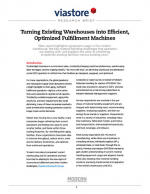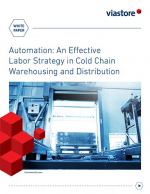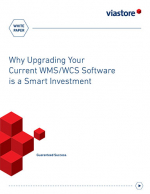The Value of Automating Your Frozen Storage Warehouse
Intelligent systems to keep the cold constant, the quality high and energy use low.
According to the American Frozen Food Institute, frozen foods have been providing American consumers with convenient, affordable and ever increasing healthy food and meal options since 1930, when Clarence Birdseye’s first line of frozen foods first hit grocery stores.
Consumers have continued to warm more and more to frozen foods. According to Transparency Market Research, the demand for frozen food was valued at US $ 224.74 billion in 2012 and is expected to reach $ 293.75 billion by 2019. Europeans and North Americans comprise 39.5% and 26.3% respectively in this global frozen food market.
At the country level, the U.S. is the largest market, accounting for more than 80% share in the frozen food market followed by Japan and Germany.
While ready-made frozen meals, frozen pizza, desserts, snacks, entries, etc., accounted for over 30% of the total global market revenue in 2012, this is expected to grow 3.9% from 2013 to 2019. A newer segment, that of frozen foods made with natural and organic ingredients, is becoming a target for manufacturers.
Advancements in freezing technologies are allowing manufacturers to preserve the nutritional value of fruits and vegetables for a longer time period and in some cases restore key nutrients once lost using prior freezing processes.
So, across the board, consumption of frozen food continues to grow. Companies that manufacture, process, store and distribute this food need to have ever-sophisticated capacities along the entire supply chain. Secure, transparent and energy-saving cold storage material handling automation solutions that ensure high process efficiency is the new ‘secret sauce’ for success.
While frozen and temperature controlled automated storage warehouses are needed for food production and distribution, they are also viable in the medical technology and pharmaceutical industries.
All these systems must ensure an uninterrupted cooling chain, and efficient flow of goods and full product traceability. Manufacturers, distributors and service providers continue to look for ways to automate processes involving frozen products to improve working conditions, increase accuracy, reduce errors, make efficient use of space, reduce labor and save energy.
What’s Related




Favorites





